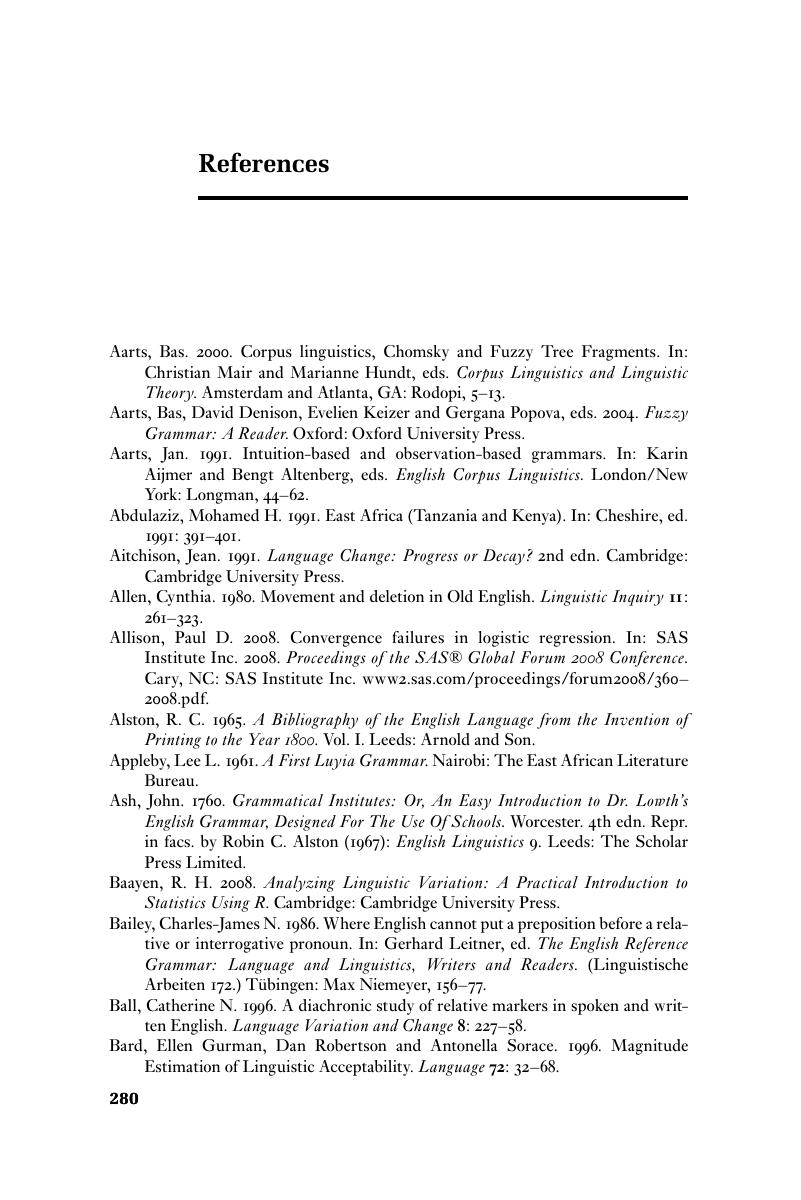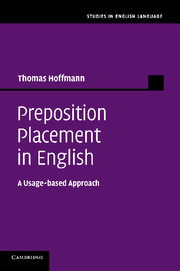Book contents
- Frontmatter
- Contents
- List of Figures
- List of Tables
- List of Abbreviations
- Acknowledgements
- 1 Introduction
- 2 Corroborating evidence: Data and methodology
- 3 Case notes: Independent factors
- 4 Evidence I: Corpus results
- 5 Evidence II: Experimental results
- 6 Preposition placement: The case for a Construction Grammar account
- 7 Conclusion: The verdict
- Online appendix
- References
- Index
- References
References
Published online by Cambridge University Press: 04 February 2011
- Frontmatter
- Contents
- List of Figures
- List of Tables
- List of Abbreviations
- Acknowledgements
- 1 Introduction
- 2 Corroborating evidence: Data and methodology
- 3 Case notes: Independent factors
- 4 Evidence I: Corpus results
- 5 Evidence II: Experimental results
- 6 Preposition placement: The case for a Construction Grammar account
- 7 Conclusion: The verdict
- Online appendix
- References
- Index
- References
Summary

Information
- Type
- Chapter
- Information
- Preposition Placement in EnglishA Usage-based Approach, pp. 280 - 294Publisher: Cambridge University PressPrint publication year: 2011
